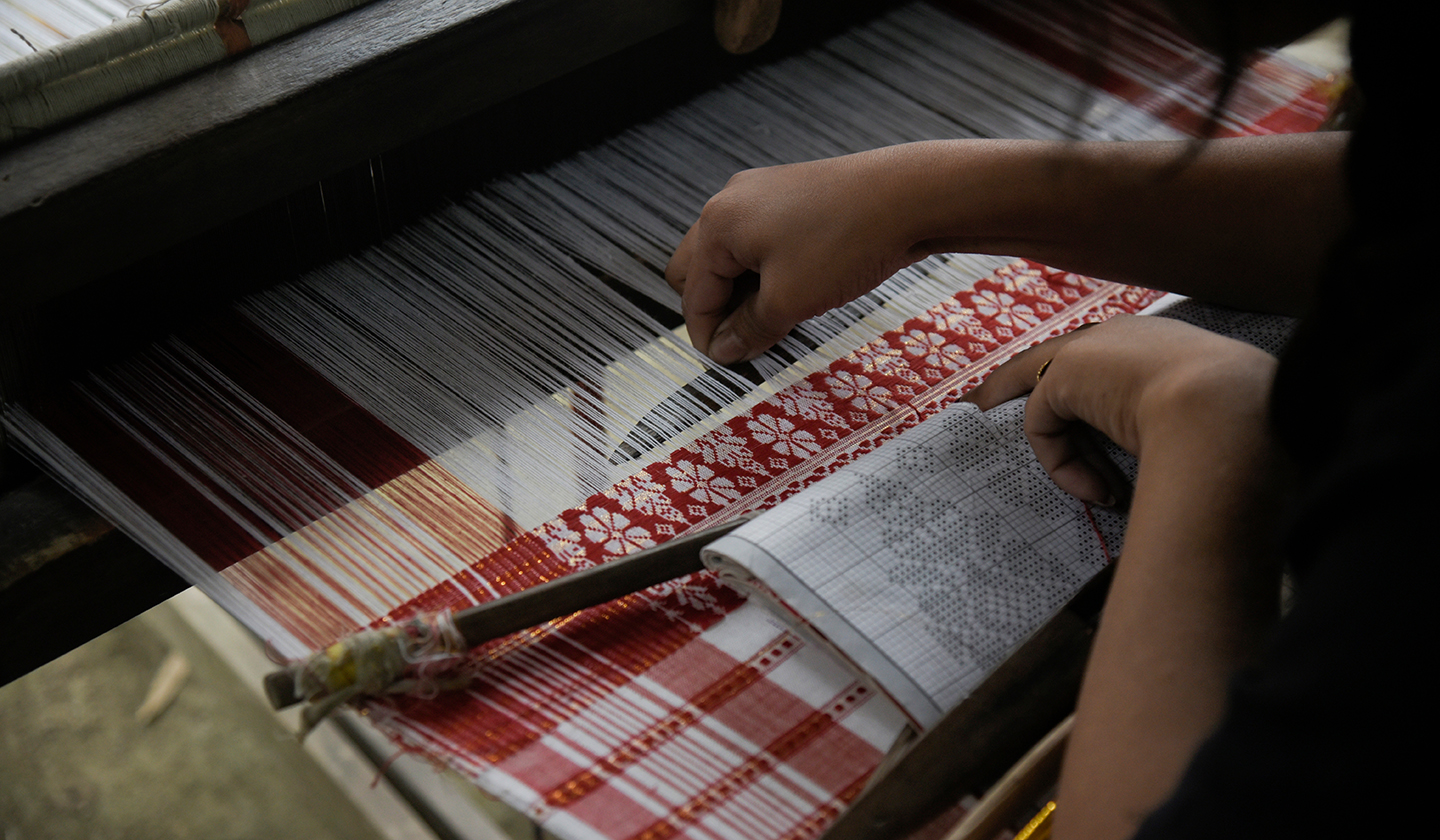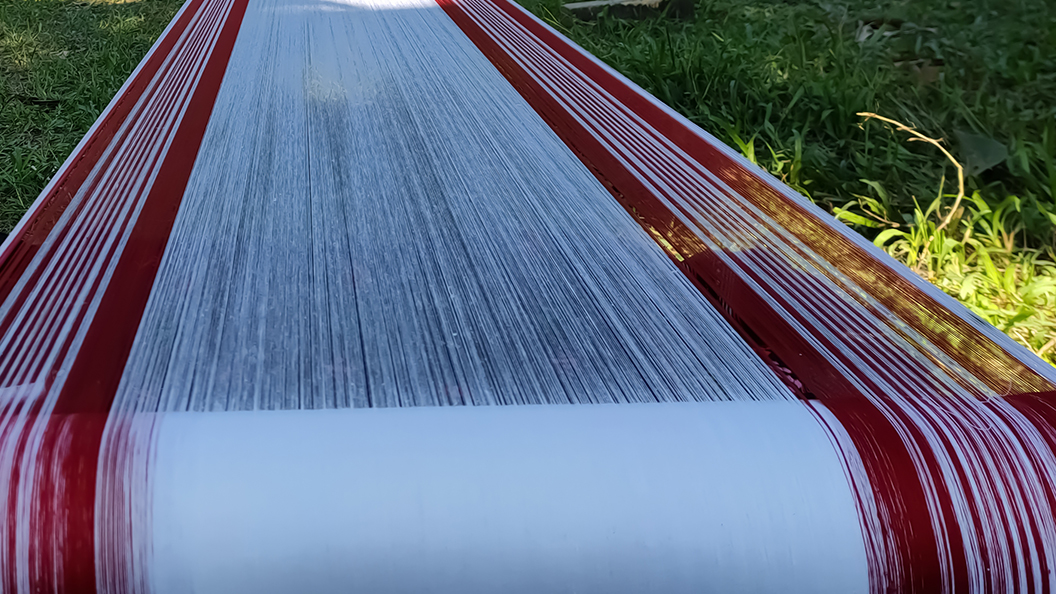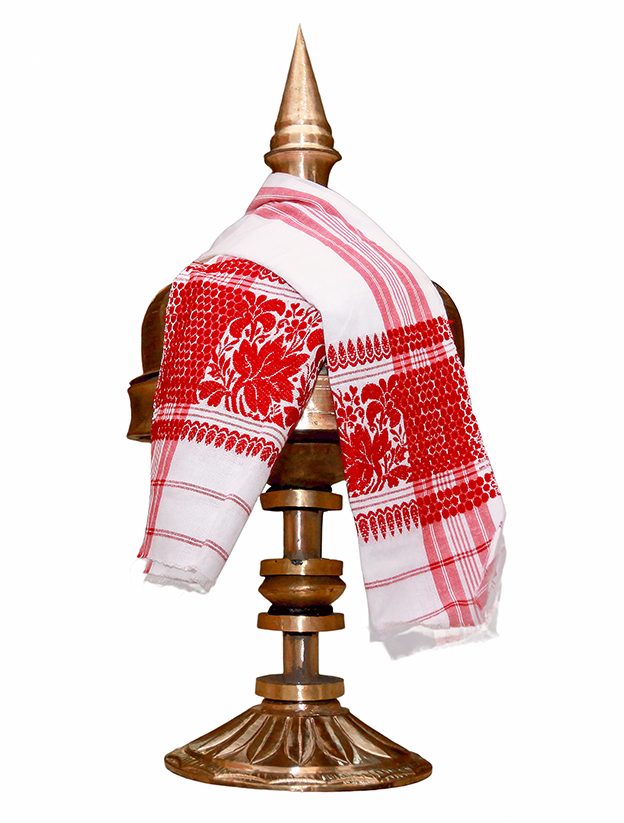THE CRAFT
Gamosa Handloom

From the state of Assam

Assam
The Gamosa, or Gamusa, is a rectangular piece of white or cream cloth with red thread work along the sides. Though its name, combining ga (body) and mosa (wipe), literally means a cloth for wiping the body, the textile is integral to the community’s material culture. It's imbued with ceremonial significance.

Heritage Value
Gamosa Handloom is said to have been in use since the 15th and 16th centuries under the Ahom dynasty. While the white-and-red colour scheme remains uniform, the motifs differ. Florals dominate the designs, like the gutimala (jasmine), parijat lata (celestial flower) and the saptamukhi (seven-faced diamond).
While cotton is most commonly used, Gamosa is also crafted from mulberry silk, muga, and tussar. There are up to nine types of the cloth serving various roles within the community. The Xadharon (ordinary) Gamosa, with its simple motifs, is meant for daily use. The Phulam Gamosa (with flowers) features elaborate natural scenes and dancing figurines, has ceremonial value. It's used as headgear on men during major Assamese festivals like Bihu.
The style was certified with a Geographical Indication (GI) tag in 2022.
While cotton is most commonly used, Gamosa is also crafted from mulberry silk, muga, and tussar. There are up to nine types of the cloth serving various roles within the community. The Xadharon (ordinary) Gamosa, with its simple motifs, is meant for daily use. The Phulam Gamosa (with flowers) features elaborate natural scenes and dancing figurines, has ceremonial value. It's used as headgear on men during major Assamese festivals like Bihu.
The style was certified with a Geographical Indication (GI) tag in 2022.

Memory Vault
In 2013, a 1,455.3-metre silk Gamosa was recognised as the world’s longest piece of woven cloth by the Guinness Book of World Records. Made by 12 artisans over 6 months, it weighed over 100 kilograms and depicted the state’s icons, such the one-horned rhino, the river island of Majuli, revered seer Sankardeva, and the late singer, Bhupen Hazarika.
Disclaimer:
Any information on this page is anecdotal and based on publicly
available details. If you're interested in learning more,
click here.